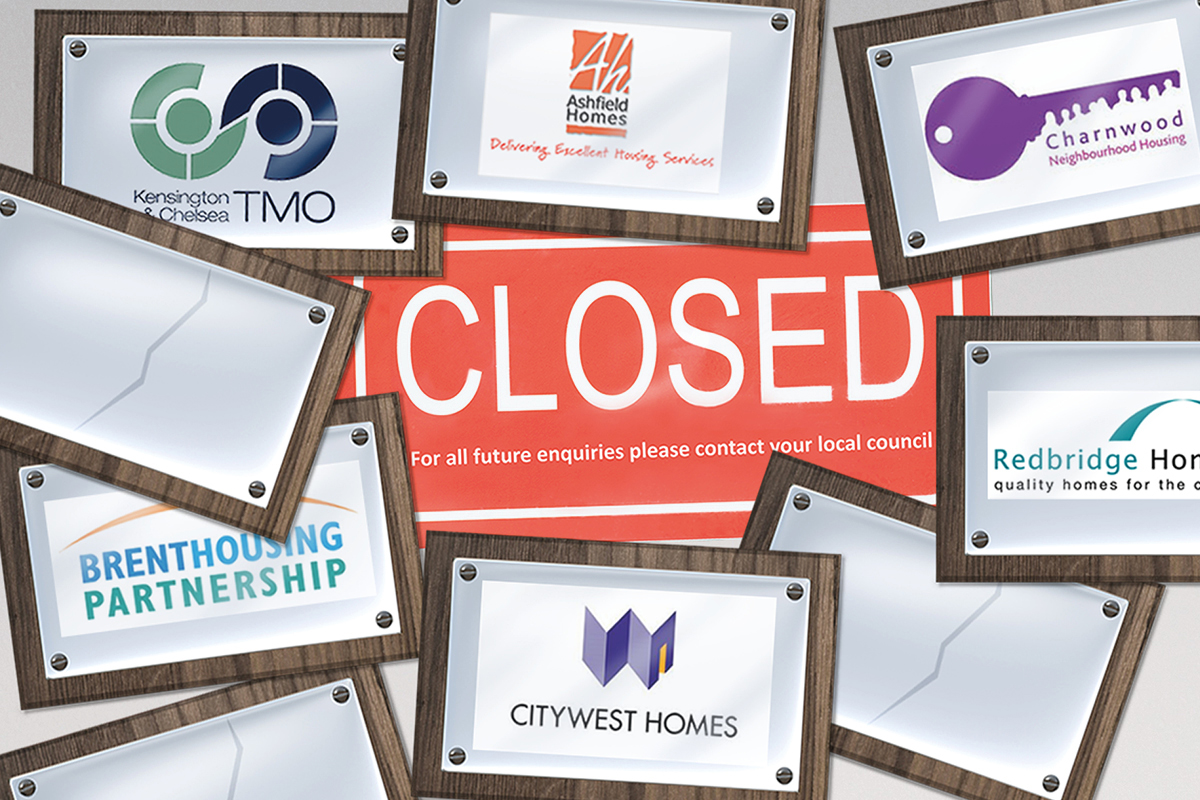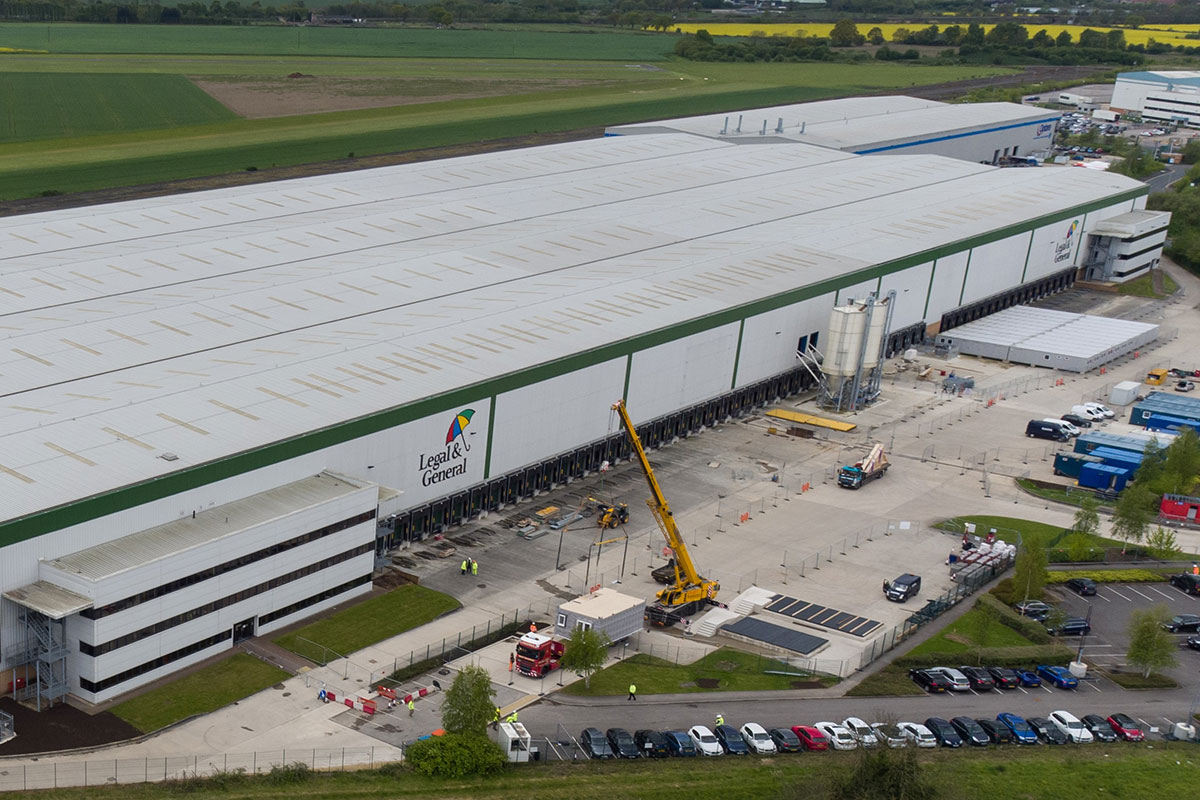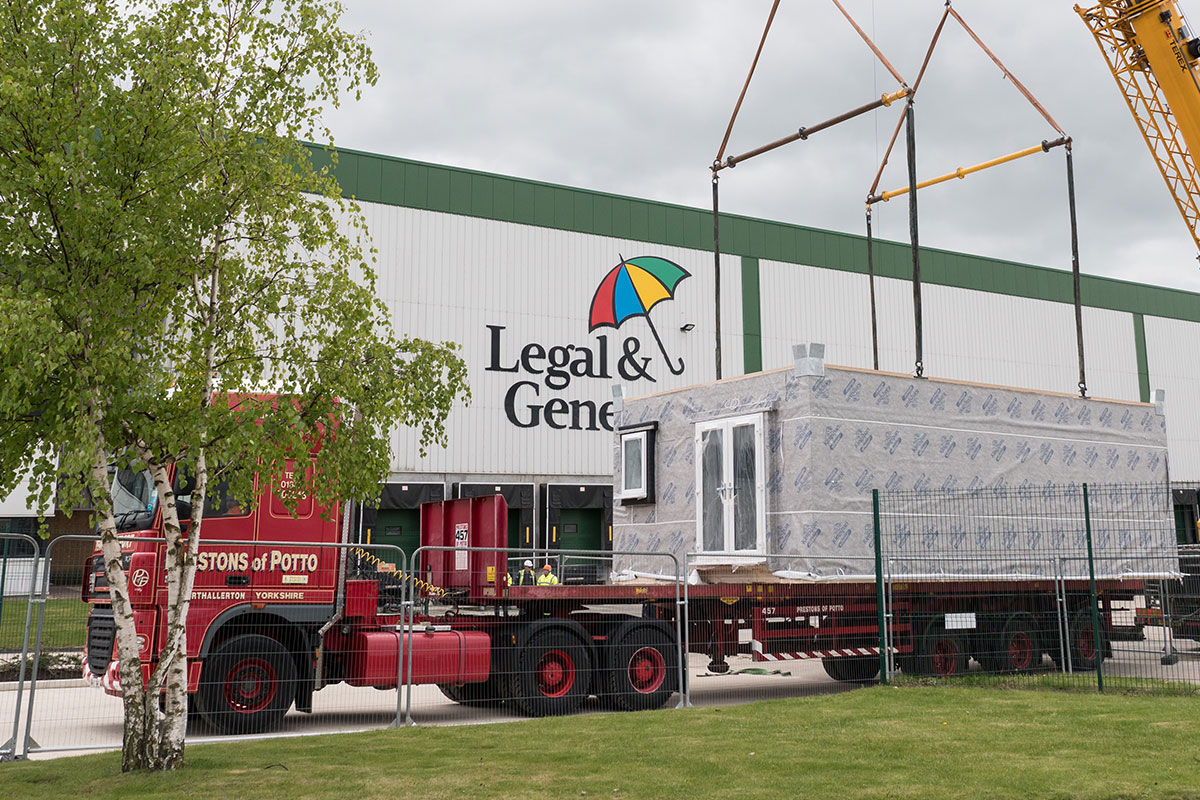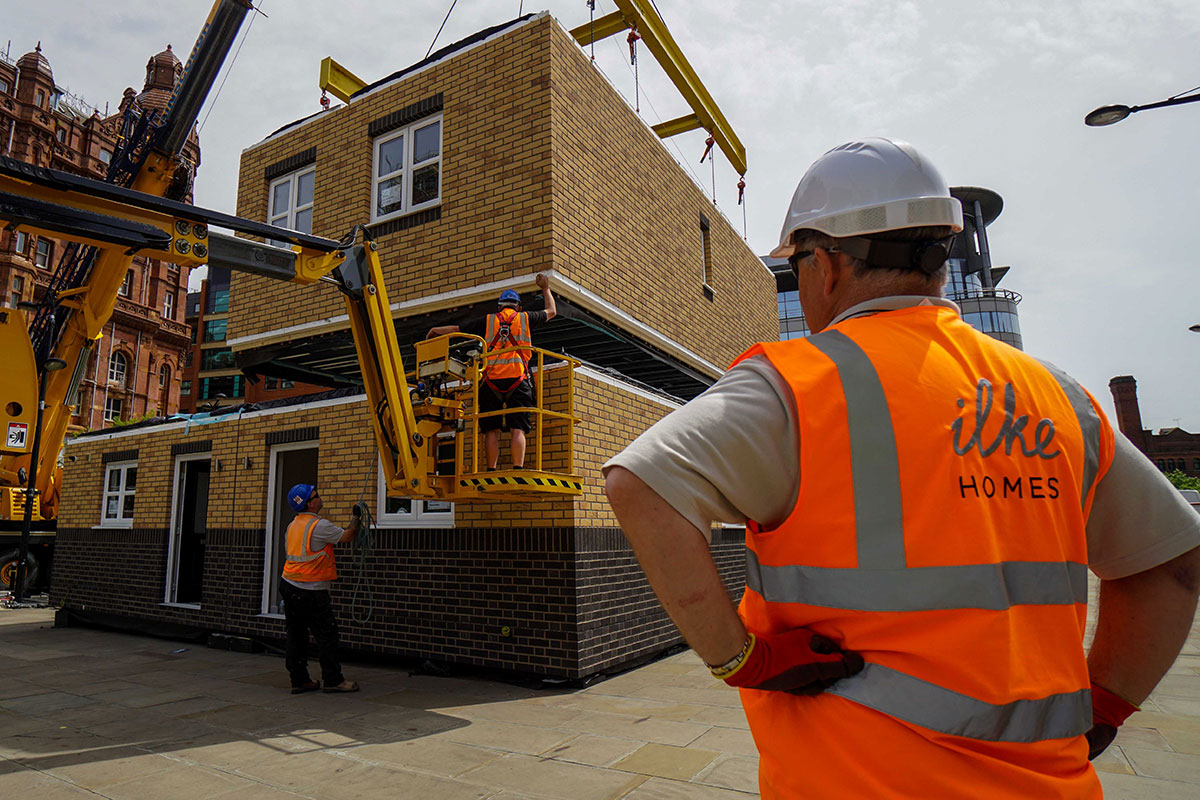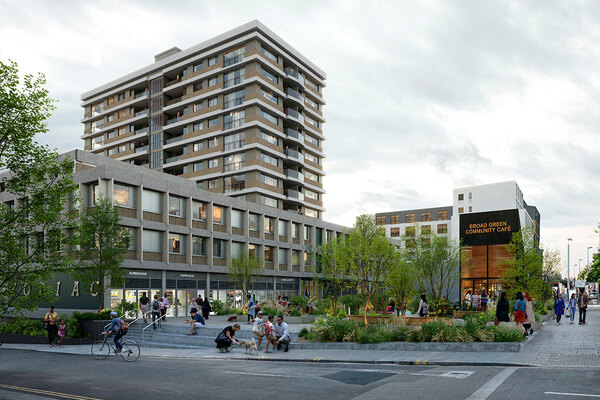You are viewing 1 of your 1 free articles
We take a look around L&G’s housing factory
Offsite modular housebuilding has long been mooted as a game changer for the sector, but has delivered relatively few new homes so far. James Wilmore travels to a factory in Yorkshire to find out if the future has finally arrived
The silence is deafening. While walking around Legal & General’s (L&G) 550,000 sq ft modular housing factory, the lack of noise is the first thing that strikes Inside Housing. No hammering, no sawing, no full-throated hollering.
All one notices is half a dozen trainees getting a briefing, a man painting the inside of a living room and a couple of others trying to insert a window in a modular house.
The reason for this lack of activity appears to be twofold. First, modular housing’s precision manufacturing approach means it does not require the same level of sustained workforce as traditional housebuilding. And second, L&G’s modular business is just not that busy. Not yet, at least.
L&G spent nine months of last year honing its products through prototypes
“It’s early days,” admits Rosie Toogood, chief executive of L&G Modular Homes, as she leads Inside Housing around the £55m factory, situated on a giant industrial estate in Sherburn in Elmet, 20 miles east of central Leeds. Since joining the financial services giant from Rolls-Royce in June 2017, Ms Toogood has overseen steady progress on the ambitious project. “We have deliberately taken a very considered approach. We make no bones about that,” she explains.
L&G spent nine months of last year honing its products through prototypes. “We have taken the time to get to the level of detail that a lot of people wouldn’t go to,” Ms Toogood says. “We are designing and manufacturing homes. We’re not just doing under a roof what people do on a field.”
Modular housing has for some time been heralded as a panacea for Britain’s housing crisis. Much has been written and said about how offsite housing – badged under the catch-all moniker ‘modern methods of construction’ (MMC) – can speed up the rate of housebuilding to at least make the government’s 300,000-homes-a-year target avoid a fairytale whiff. But L&G and others want to get it right.
“When you build a factory, you might have one [site] already, or you’ve got a product and you’re just expanding your capacity. But we’re doing all of it from scratch,” explains Ms Toogood.
L&G’s first significant work has been building eight modular units for Silva Homes on an L&G-owned development in Berkshire. Four of these have been delivered. The firm is also in the process of building about 100 homes for what Ms Toogood regards as its first external customer. Despite some nudging, she is not ready to reveal the identity of that client.
More orders are on the horizon. “We are building a pipeline,” Ms Toogood says.
So what is the pitch to housing associations? Why would they choose modular? “It’s speed, quality and the internal fit-out,” she says. “We have very rigorous quality control processes. You get a good-quality product every time.”
She is keen to stress, however, that the approach does not mean an identikit product. “It’s about standardising the 80%, so we can focus on the 20% that really differentiates the product,” she says.
“We spend a lot of time working with the customer to understand what their price point is, their attitude to sustainability, how bold they want to be on carbon neutrality.”
On the final cost, she again refuses to be drawn on specifics, but says: “If you adopt this approach you drive up quality, pace, efficiency, productivity – and you drive down cost. To be a game changer, modular has to be competitive with traditional and we’ll get there over time.”
Some developers remain to be convinced about price. Speaking at a recent property event in Manchester, Alex Russell, managing director of Property Alliance Group, said: “We spent 12 months looking at [modular] because we were told it was going to be cheaper. It’s definitely not cheaper like-for-like.”
However he admitted the risks are lower with factory-built homes and money is saved with delivery speed.
Legal & General’s 550,000 sq ft modular factory
Mark Farmer, chief executive of consultancy Cast and part of a government working group on MMC, says that comparing modular prices with traditional build is “not straightforward”. But he urges producers to be competitive.
“What [modular manufacturers] have got to get their heads around pretty quickly is their pricing strategy,” he says. “In the early phases they might be losing money. It’s a risk, but then you start to create volume.”
Ms Toogood has used her knowledge gained from 25 years at Rolls-Royce to introduce an approach used in other industries for decades.
She talks of the ‘Toyota’ method as she points to noticeboards detailing step-by-step plans for the modules. She describes it as a “standardised way to approach manufacturing and drive quality into products”.
In practical terms, this means L&G has four big wood-cutting machines and four smaller ones, which slice timber panels to millimetre precision to assemble a module.
“This level of precision allows us to specify the internal fittings in a way you can’t do on a building site,” Ms Toogood says. “It allows us to build the modules in a couple of weeks, rather than anything up to three or four months [traditionally] to fit out a home on site.”
The neatly designed modules consist of the timber frames bolted together, with the fittings and electrics in place ready to be transported.
Rosie Toogood, chief executive of L&G Modular Homes
Currently, L&G offers a two-bed and a three-bed home, but it is expanding that range. Two townhouse options are being developed – a three-bed option and a four-bed option – and one, two and three-bed apartments.
About 150 people are employed at the facility, with 60 of those on the factory floor. The rest are architects, structural and manufacturing engineers. Eighteen more factory floor workers are due to start on 18 February.
“As we broaden the product range we will take more orders,” says Ms Toogood. “We will ramp up production in a smooth way so we can make our delivery commitments and recruit more people.”
L&G is far from alone in its modular quest. Companies across the built environment sector are taking a major punt on MMC.
L&G is far from alone in its modular quest
Housing association Swan has its own modular factory in Basildon, Essex, where it plans to build 400 homes a year. Construction giant Laing O’Rourke owns a £150m modular factory in the East Midlands, Berkeley Homes started building modular homes from its factory in Kent last year and Crest Nicholson has said it plans to build 2,000 modular homes a year. Modular pioneer Urban Splash is also taking major steps, having just landed one of the UK’s biggest modular schemes to date in Cambridgeshire.
Other large associations are starting to make positive steps towards modular. L&Q recently pledged to ramp up its use of MMC with the aim of using some form of offsite construction on all homes by 2021. Clarion is carrying out pilot projects to help it “evaluate” modular construction methods.
“We have approached a number of specialist providers for their views and if the pilots are successful we could potentially deliver modular housing on a larger scale across other schemes and tenures,” a Clarion spokesperson tells Inside Housing.
Meanwhile Places for People is upping the capacity of its offsite manufacturing facility in partnership with specialist ModularWise. The 60,000-home landlord is also “exploring new opportunities with other offsite manufacturers”, a spokesperson says.
L&G: “We’re not just doing under a roof what people do on a field”
And RHP, which developed a prototype with L&G, says it is aiming to “deliver as many homes as we can using offsite manufactured homes”.
Tim Willcocks, executive director of development at RHP, says: “We are in detailed negotiation with two providers, and have a healthy pipeline of projects which we are working on.”
All this is encouraging for both L&G and the other high-profile new(ish) kid on the offsite block, Ilke Homes. Ilke, a tie-up between private equity-owned Keepmoat Homes and modular specialist Elliott, officially opened its 270,000 sq ft factory near Harrogate last November, 20 miles north of L&G’s site. The facility took nine months to convert to Ilke’s specification as it was formerly a printing plant for Yellow Pages.
Nigel Banks, product and marketing director at Ilke, reveals that there is a similar sense that the firm has shifted through the gears gradually. “It’s taken us two or three years, but we’ve got a clear business plan,” he explains.
There is no shortage of interest in the hoped-for modular revolution
Ilke is planning to build between 600 and 1,000 homes by April next year but this is all dependent on sites getting through planning. The factory has total capacity for about 2,000 homes a year. The company is looking to build 5,000 homes within five years, with the aim of opening more factories to achieve this.
Judging by the number of visitors so far to Ilke’s factory, there is no shortage of interest in the hoped-for modular revolution. About 2,500 people have been through its doors, including communities secretary James Brokenshire. “It has taken a lot of work but I think people do get it now, particularly more forward-thinking housing associations,” says Mr Banks.
Ilke is delivering homes on sites to at least three housing associations, including six houses for Home Group at the Gateshead Innovation Village, 16 modular homes for Places for People in Hull, and 30 being installed for LiveWest housing association. Other schemes are due on site this summer. Mr Banks says Ilke is also “working with” 10 to 20 housing associations across England and Wales, and about the same number of local authorities.
Ilke Homes plans to build between 600 and 1,000 homes by April next year
So why has it taken so long for modular to reach this point? “People have struggled to get volume going [in the past],” says Mr Banks. “You need volume and scale to make the cost efficiencies and cover the overheads of large factories.”
He argues that modular is now more accepted and is shrugging off its oft-repeated association with post-war prefab homes. “Some housing associations have legacy challenges with prefabs,” says Mr Banks. “But the homes built now – with the technology, the methods and materials – are very different to what was used back then.”
Back at L&G, Ms Toogood explains: “It [modular] is not easy. It takes someone with the appetite to invest and it takes patience.” She appears relaxed about any pressure when asked when L&G may expect to make a profit from modular. “In the future,” she replies, with a slightly nervous laugh. “We have a plan that’s agreed by L&G to get us to a profitable basis – but that’s not a day-to-day pressure, it’s a long-term journey and there’s a lot of investment behind this business to get to that point.”
“The momentum is building and there are little clusters coming together” Rosie Toogood, L&Q Modular Homes
So while modular is taking time to develop, there are encouraging signs. Those involved are remaining upbeat, also helped by positive noises from government. Ministers have committed to favour MMC on public infrastructure projects from this year. Housing minister Kit Malthouse is also on board. He said in a new year’s address that offsite “holds enormous potential”. He added: “We have lots of money to help them do it, to support it and we want 2019 to see it really take hold.”
Ms Toogood is encouraged by the level of support. “The momentum is building and there are little clusters coming together. We’re starting to shape a new industry. I’d like to see manufacturing homes become mainstream.”
L&G and Ilke are both planning more factories. Ilke originally looked at 80 sites before plumping for its North Yorkshire base, so already has a list of options.
At L&G, Ms Toogood adds: “I will definitely say that’s in the next five-year horizon. It’s the whole essence of this plan. We are taking time with standardisation so we can build more factories. Frankly, we will only make a dent in the housing crisis if we do.”
A timelapse video showing offsite homes being built in hours at Housing 2018
Future of Work Festival
New for 2019, Inside Housing’s Future of Work Festival will bring together HR and organisational development professionals from the housing sector to discuss and explore the challenges of how to successfully evolve towards the working environment of the future.
Seize this opportunity to rethink your workforces and workplaces by reconsidering the roles of individuals, organisations, automation technology and how society will approach work.
Assess and benchmark your business strategy with the leaders in the housing sector:
- Defining the Future of Work: what does it look like, what will be the implications, how do you rethink your workforce strategy?
- How to embed Electronic Data Interchange into your workforce, attract the widest pool of talent, be authentic and innovative, keep your workforce happy and productive, and position your brand
- Identifying, assessing and closing the skill gaps: what skills will be required in the future and how do you prepare for the undefined?
- Appealing to and maintaining a multi-generational workforce: how to address differing career aspirations, expectations, behaviours and values
- How best to implement the best tech, for example, big data, artificial intelligence, automation, blockchain and the Internet of Things. How will this change workplace skills and wages? How do you evolve towards a ‘STEMpathetic’ workforce?
- Providing your HR and OD department with the right skills and toolkits to revise talent, organisational structures and business models. Be social and environmentally friendly, and data driven – investing in disruptive tech, skills training and ethical use of tech
- Promoting well-being and employee experience
- Introducing training and learning as part of the career path
- Embracing agile working – understanding how flexible and alternative working arrangements can boost productivity
The festival will take place on 17 September, at Westminster Bridge, County Hall in London.

